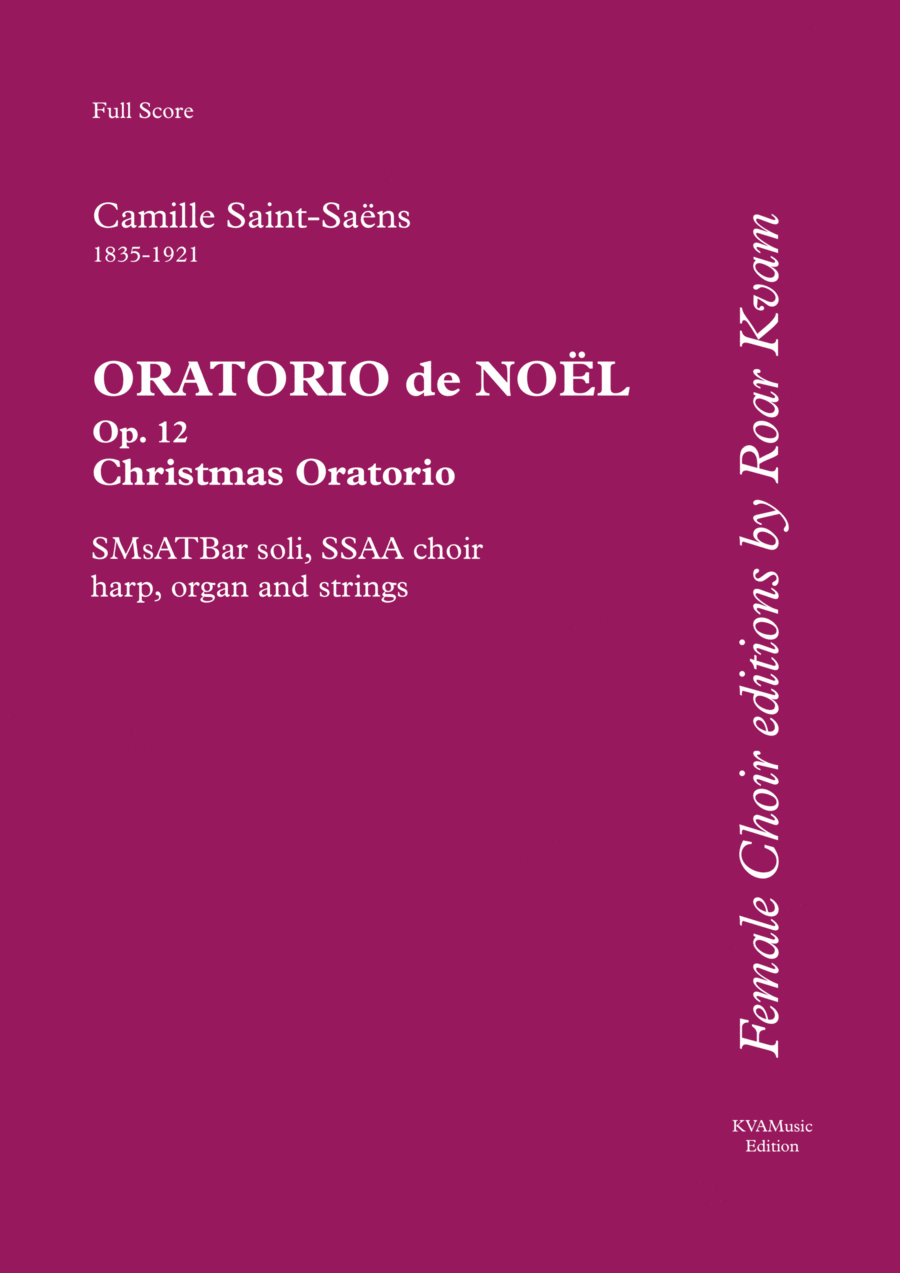Level 3 - Digital Download SKU: A0.1401939 Composed by Camille Saint-Saens. Arranged by Roar Kvam. 19th Century,Christmas,Latin,Praise and Worship,Romantic Period. 64 pages. KVAMusic Edition #985137. Published by KVAMusic Edition (A0.1401939). Charles-Camille Saint-SaeÌ?ns (9 October 1835-16 December 1921) was a French composer, organist, conductor and pianist.He was a musical prodigy and made his concert debut at the age of ten. After studying at the Paris Conservatoire he followed a conventional career as a church organist, first at Saint-Merri, Paris and, from 1858, La Madeleine, the ocial church of the French Empire. After leaving the post twenty years later, he was a successful freelance pianist and composer, in demand in Europe and the Americas. As a young man, Saint-SaeÌ?ns was enthusiastic for the most modern music of the day, particularly that of Schumann, Liszt and Wagner, although his own compositions were generally within a conventional classical tradition. He was a scholar of musical history, and remained committed to the structures worked out by earlier French composers.This brought him into conflict in his later years with composers of the impressionist and dodecaphonic schools of music; although there were neoclassical elements in his music, foreshadowing works by Stravinsky and Les Six, he was often regarded as a reactionary in the decades around the time of his death. He wrote the Oratorio de NoeÌ?l (Christmas Oratorio) at the end of the 1850s and completed it in 1860.The first performanse was at the church La Madeleine in Paris December 1869.The work is dedicated to A Madame la Vicomtesse de Grandval.The work is originally scored for five soloists, soprano, mezzo-soprano, alto, tenor and baritone, mixed choir (except no. 4 which is for SSAA), harp, organ and strings (in this edition the choir has been transcribed for a SSAA choir). Texts in the Oratorio de NoeÌ?l is drawn from the Old and New Testaments: (1. Instrumental).2. Luke 2,8-14. 3. Psalm 39,1. 4. John 11.27. 5. Psalm 117, 26-28. 6. Psalm 2,1 and Gloria Patri. 7. Psalm 109,3 and Graduale. 8. Isaiah 49,13. 9. Lamentations 2,19, Mica 4.13, Zachary 9,9, Isaiah 62,1. 10. Psalm 95,8-9, 11,13.
